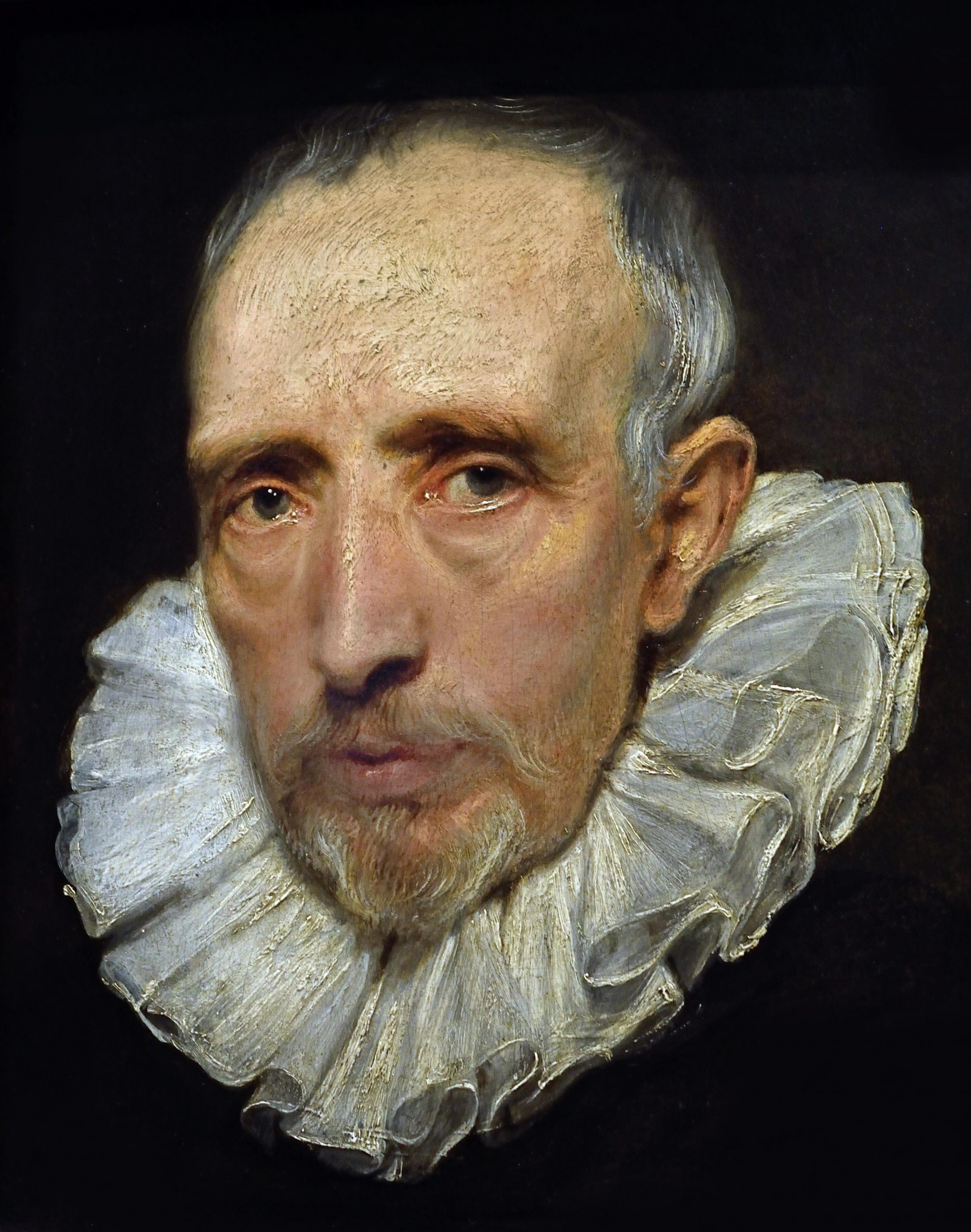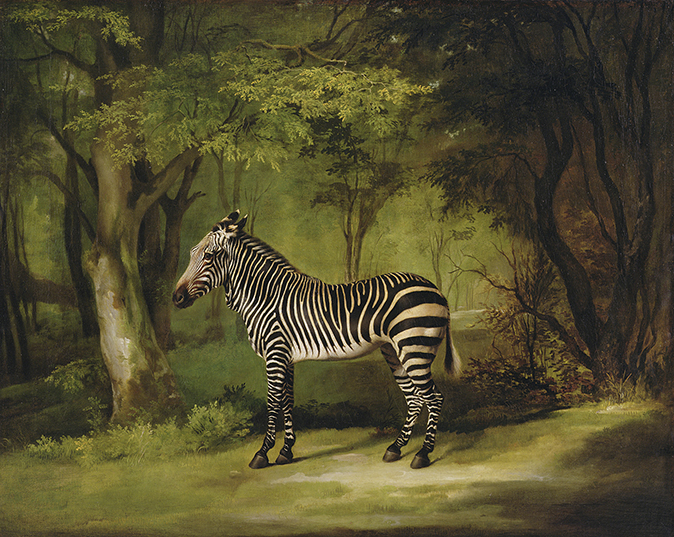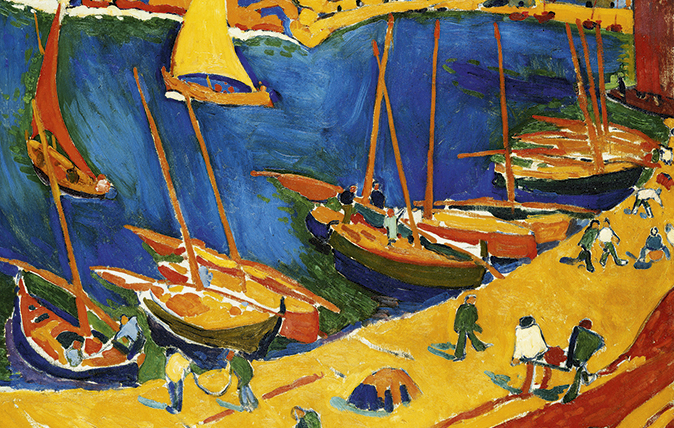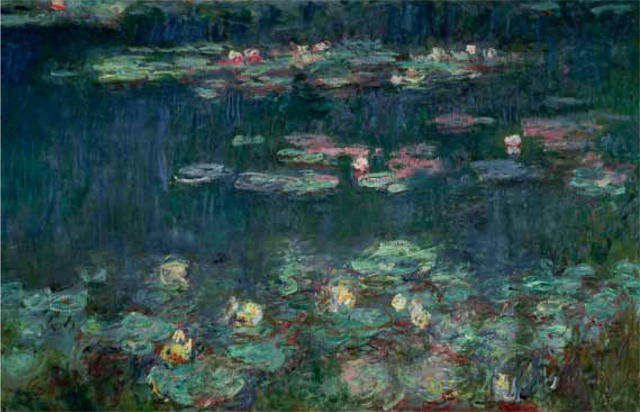My Favourite Painting: Lorna May Wadsworth
The artist picks a classic van Dyck portrait, whose 'flesh belies a beating pulse'.

Lorna May Wadsworth on Cornelis van der Geest by Sir Anthony van Dyck
'A sure sign that I love a painting is when I’m drawn to do a charcoal sketch of it, in situ – but this beauty in the National Gallery is the only one I’ve drawn twice.
'It always stops me in my tracks. He’s right there – this man who lived 400 years ago. His rheumy eyes are utterly commanding; his painted flesh belies a beating pulse. As a portrait painter, the magic of manifesting a human presence across the ages is my obsession.
'I lost my first sketch of Cornelis when I left him in a carrier bag at a Soho restaurant. A year later, I drew him again, but I’ve always had the sneaking suspicion that it’s not as good as the one that got away.'
Lorna May Wadsworth is an artist, recognised for her portraits of Rowan Williams and Neil Gaiman, among others, and her interpretation of the Last Supper in St Albans Cathedral
John McEwen comments on Cornelis van der Geest
Van Dyck was born in Antwerp, seventh son of Franchois van Dyck, a cloth and silk merchant. His grandfather had been a painter and his mother’s family included artists: no surprise the boy’s prodigious talent saw him apprenticed at 10 to one of Antwerp’s leading painters, Hendrick van Balen. Van Dyck’s apprenticeship coincided with a revival in the fortunes of Antwerp.
A truce had concluded the war between Spain, whose empire included the southern Netherlands, and the now independent republic of the Protestant northern Netherlands. Albert of Austria and Isabella, daughter of Philip II of Spain, had been made regents by the King and proved their political ability with the long-negotiated peace. In Catholic celebration, after the iconoclasm inflicted by the war, new altarpieces were commissioned, notably from Rubens — now returned to his native city after a decade in Italy and appointed court painter to Albert and Isabella. His reappearance had a decisive impact on Van Dyck, who soon came within his orbit.
The year before this portrait of der Geest (1555–1638), Rubens referred to van Dyck as ‘the best of my pupils’. Der Geest was an Antwerp notable — a leading spice merchant, dean of the merchants guild and major collector and patron. It was he, as church warden of St Walburga, who arranged the commission of The Raising of the Cross, which, with The Deposition — both paintings today in the cathedral — confirmed Rubens as an artistic titan. On der Geest’s death, Rubens dedicated an engraving of the St Walburga altarpiece to ‘the best of men and the oldest of friends’.

My favourite painting: Amy Meyers
'Stubbs’s portrayal is one of the subtlest and most poignant commentaries on the troubling displacements that were accruing from the

My favourite painting: Peter May
'Vividly coloured sailing boats in a harbour, which I gazed at for hours'

My Favourite Painting: Lulu
Lulu chooses her favourite painting for Country Life.
Sign up for the Country Life Newsletter
Exquisite houses, the beauty of Nature, and how to get the most from your life, straight to your inbox.
Toby Keel is Country Life's Digital Director, and has been running the website and social media channels since 2016. A former sports journalist, he writes about property, cars, lifestyle, travel, nature.
-
 Designer's Room: A solid oak French kitchen that's been cleverly engineered to last
Designer's Room: A solid oak French kitchen that's been cleverly engineered to lastKitchen and joinery specialist Artichoke had several clever tricks to deal with the fact that natural wood expands and contracts.
By Amelia Thorpe
-
 Chocolate eggs, bunnies and the Resurrection: Country Life Quiz of the Day, April 18, 2025
Chocolate eggs, bunnies and the Resurrection: Country Life Quiz of the Day, April 18, 2025Friday's quiz is an Easter special.
By James Fisher
-
 'As a child I wanted to snuggle up with the dogs and be part of it': Alexia Robinson chooses her favourite painting
'As a child I wanted to snuggle up with the dogs and be part of it': Alexia Robinson chooses her favourite paintingAlexia Robinson, founder of Love British Food, chooses an Edwin Landseer classic.
By Charlotte Mullins
-
 The Pre-Raphaelite painter who swapped 'willowy, nubile women' for stained glass — and created some of the best examples in Britain
The Pre-Raphaelite painter who swapped 'willowy, nubile women' for stained glass — and created some of the best examples in BritainThe painter Edward Burne-Jones turned from paint to glass for much of his career. James Hughes, director of the Victorian Society, chooses a glass masterpiece by Burne-Jones as his favourite 'painting'.
By Charlotte Mullins
-
 'I can’t look away. I’m captivated': The painter who takes years over each portrait, with the only guarantee being that it won't look like the subject
'I can’t look away. I’m captivated': The painter who takes years over each portrait, with the only guarantee being that it won't look like the subjectFor Country Life's My Favourite Painting slot, the writer Emily Howes chooses a work by a daring and challenging artist: Frank Auerbach.
By Toby Keel
-
 My Favourite Painting: Rob Houchen
My Favourite Painting: Rob HouchenThe actor Rob Houchen chooses a bold and challenging Egon Schiele work.
By Charlotte Mullins
-
 My Favourite Painting: Jeremy Clarkson
My Favourite Painting: Jeremy Clarkson'That's why this is my favourite painting. Because it invites you to imagine'
By Charlotte Mullins
-
 The chair of the National Gallery names his favourite from among the 2,300 masterpieces — and it will come as a bit of a shock
The chair of the National Gallery names his favourite from among the 2,300 masterpieces — and it will come as a bit of a shockAs the National Gallery turns 200, the chair of its board of trustees, John Booth, chooses his favourite painting.
By Toby Keel
-
 'A wonderful reminder of what the countryside could and should be': The 200-year-old watercolour of a world fast disappearing
'A wonderful reminder of what the countryside could and should be': The 200-year-old watercolour of a world fast disappearingChristopher Price of the Rare Breed Survival Trust on the bucolic beauty of The Magic Apple Tree by Samuel Palmer, which he nominates as his favourite painting.
By Charlotte Mullins
-
 My favourite painting: Andrew Graham-Dixon
My favourite painting: Andrew Graham-Dixon'Lesson Number One: it’s the pictures that baffle and tantalise you that stay in the mind forever .'
By Country Life
